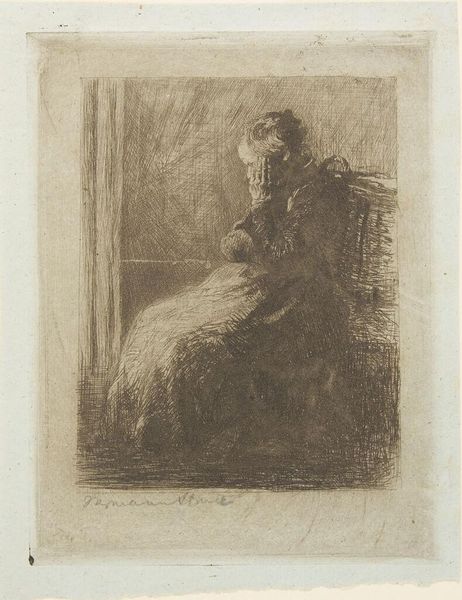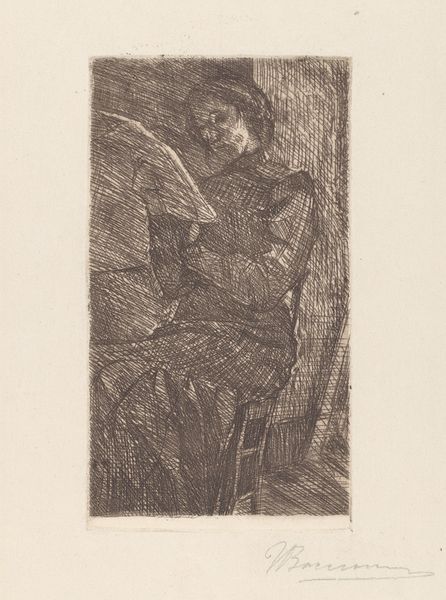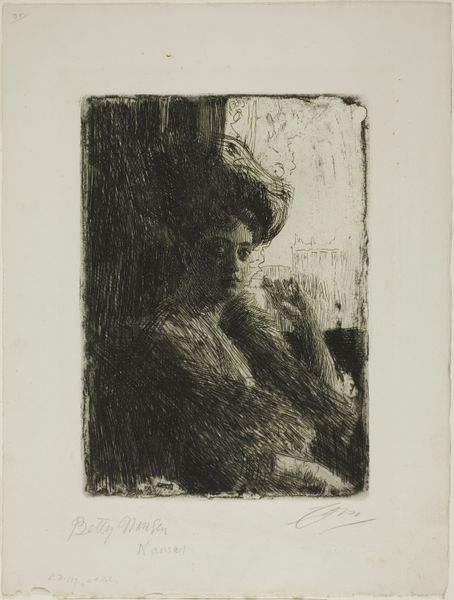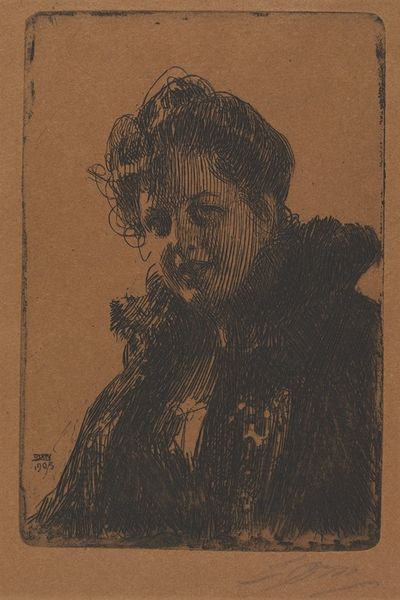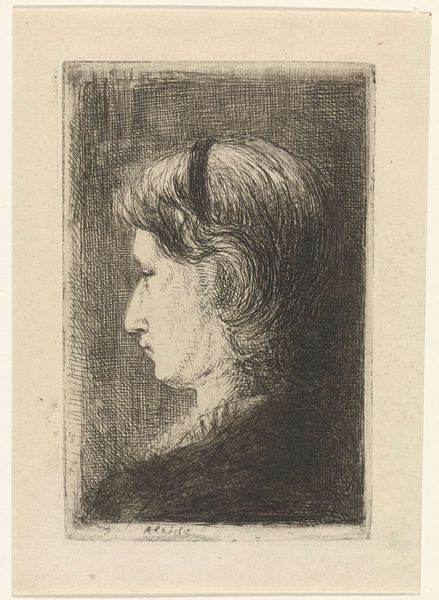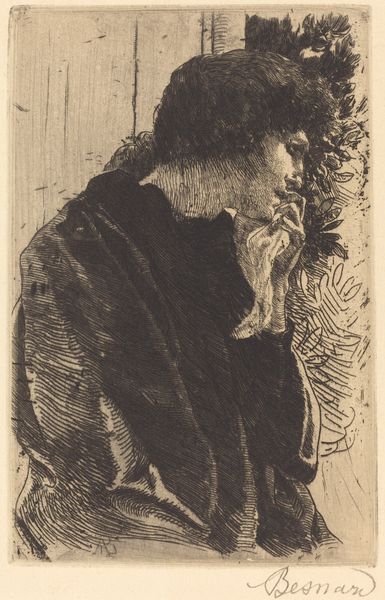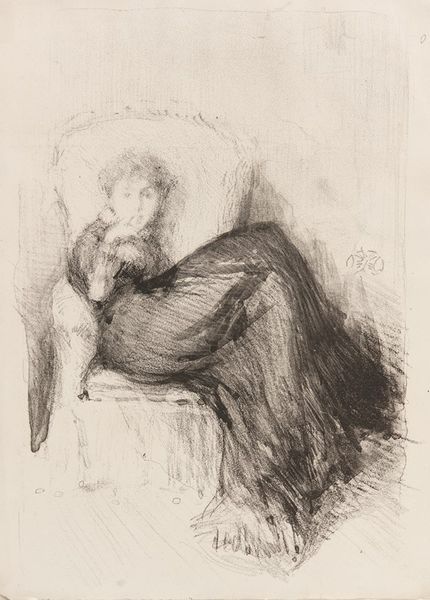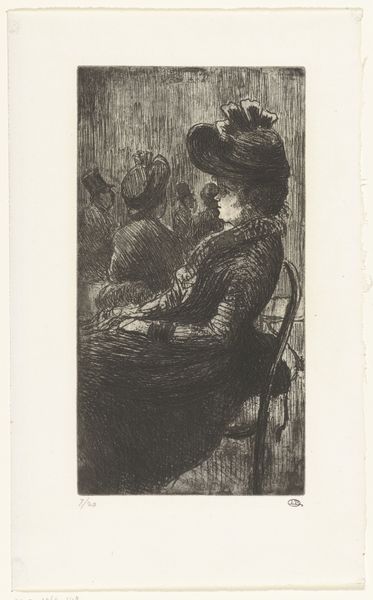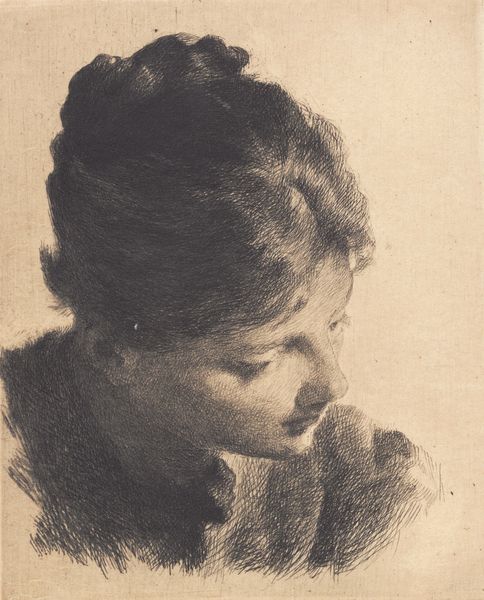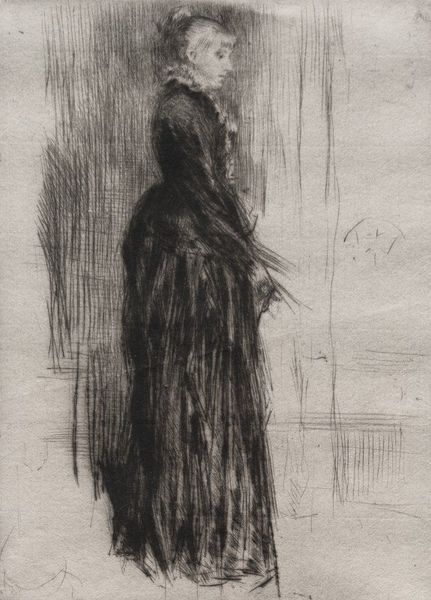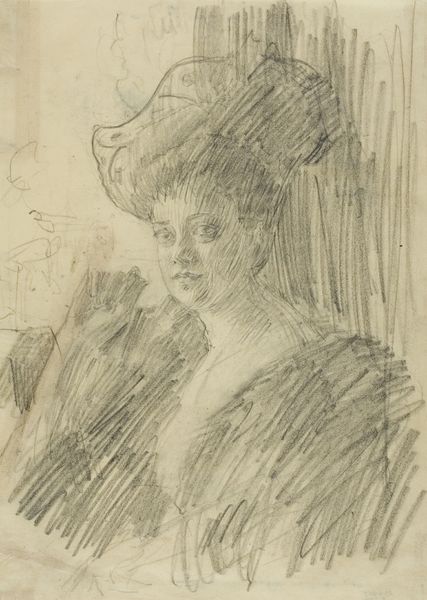
Copyright: Public Domain: Artvee
Curator: We’re looking at “Mme. Olga Bratt,” an etching created in 1892 by Anders Zorn. It presents a compelling portrait of a woman adorned in a rather elegant top hat. Editor: It feels somber, almost cloaked in shadow. The line work is so dense; she seems both present and obscured. What do the symbols communicate, hidden in that density? Curator: Consider the labor involved. Zorn, using etching, meticulously worked the metal plate, controlling line, texture and depth. This reproduction method made art more accessible, widening its consumption beyond traditional painting's elite circles. Editor: But the woman herself. Her posture, her attire. The high hat. The averted gaze speaks of status but also perhaps, a studied, almost melancholic pose. It’s like a concealed narrative, relying on conventional markers to create the illusion of a private psychology. Curator: Precisely. Etchings offered artists new creative freedom in mark-making but were also becoming commodities for bourgeois society. Note how the sharp, controlled lines simultaneously detail fashion while retaining this “handmade” feel. It's an intriguing tension in material practice and how the sitter consumes. Editor: Yes! And the top hat in this image specifically feels significant. A top hat might denote upward mobility or professional engagement but in a female representation is disrupting these familiar cultural readings of her presence within urban life. I find it is less an accoutrement of societal advancement and instead almost a disguise! Curator: The way the figure is presented offers social commentary through industrial means. He critiques and caters to bourgeois taste, embedding subtle narratives within his line and form. Editor: A paradox indeed, showcasing the subject while obscuring any trace of emotion. The effect reveals cultural tensions and contradictions related to both wealth and status. Fascinating. Curator: So it is. Considering the etching process in contrast to her fashionable attire certainly enriches our viewing experience of the print. Editor: Yes, it invites you to appreciate how codes and visual markers shift to shape ideas surrounding portraiture. I find myself asking new questions surrounding those traditional signifiers.
Comments
No comments
Be the first to comment and join the conversation on the ultimate creative platform.


